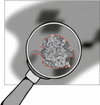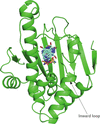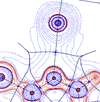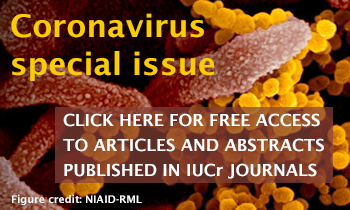issue contents
March 2025 issue
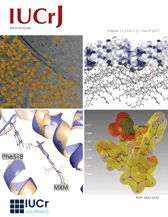
scientific commentaries
A crystal structure is often an integral component in the development of a new pharmaceutical product, and these structures are frequently used to understand, assess and often predict both the manufacturing and in vivo behaviour of these compounds. Combining a range of analytical methods with computational analysis of the crystal surfaces, Zmeškalová et al. [(2025). IUCrJ, 12, 141–154] link the properties of three solid forms of a biologically active molecule to its dissolution behaviour.
Interrogating individual two-dimensional (2D) cryo-EM images for the presence of defined three-dimensional (3D) structures that correspond to previously known (or predicted) macromolecular complexes is very challenging, but offers attractive opportunities for the analysis of large numbers of specimens. The work of Zhang et al. [(2025), IUCrJ, 12, 155–176] represents a significant step forward towards this goal.
feature articles
CHEMISTRY | CRYSTENG
This study investigates the solid forms of cannabigerol and identifies two new cocrystals, showing significant improvements in physicochemical properties. The findings highlight the strong predictive capability of surface interaction parameters for aqueous dissolution, offering valuable insights for pharmaceutical development.
research papers
CRYO | EM
A novel statistical metric for 2D template matching (2DTM), the 2DTM p-value, has been developed to improve the detection of targets in cryo-EM images under various imaging and sample conditions, particularly for smaller and aspherical targets.
BIOLOGY | MEDICINE
Download citation


Download citation


In this first instance of crystallographic fragment screening completed by the crystallographic fragment-screening platform of the Shanghai Synchrotron Radiation Facility (SSRF) in China, 800 fragments were screened and 91 compounds were identified to bind at eight different sites.
PDB reference: N-terminus of HSP90α in complex with Fr12478, 7h9k
MATERIALS | COMPUTATION
Download citation


Download citation


Interacting quantum atoms and source function studies on a series of halogen-bonded complexes between substituted pyridines and X2 or XCN molecules (X = I, Br) focus on the combined role played by the X and N interacting pairs and their local environment.
CHEMISTRY | CRYSTENG
Differences in the electronic structures of Cu(I) and Cu(II) coordination compounds with the same ligand are studied. These compounds act as a model for blue copper proteins.
BIOLOGY | MEDICINE
Download citation


Download citation


This study employs quantum crystallography to elucidate the selectivity of nonsteroidal anti-inflammatory drugs (NSAIDs), including ibuprofen, flurbiprofen, meloxicam and celecoxib, for cyclooxygenase-1 and cyclooxygenase-2 enzymes by analyzing binding energy and electrostatic interactions. The findings reveal key structural determinants of NSAID selectivity, providing valuable insights for the rational design of safer and more effective anti-inflammatory drugs.
ELECTRON CRYSTALLOGRAPHY
Here we identify and characterize the warping of molecular crystal lattices induced by electron beam exposure during microcrystal electron diffraction (MicroED/3DED) data collection. We find changes to consensus crystal lattice orientation that are often dramatic, and appear ubiquitous in small organic molecule crystals. This evidence highlights the relevance of crystal bending or warping as a consequence of radiation-induced damage on molecular specimens, and points to it as a fundamental source of error in MicroED/3DED data collection and structure determination.
PHYSICS | FELS
Download citation


Download citation


We used the Bragg coherent diffraction imaging method at the Coherent Scattering and Imaging endstation of the Shanghai Soft X-ray Free Electron Laser Facility to characterize colloidal crystals. This method successfully reproduced the static shape of crystals and we observed the defect structure of colloidal samples.
BIOLOGY | MEDICINE
Download citation


Download citation


FLEXR-MSA extends the FLEXR suite of tools by enabling electron-density map comparisons of sequence-diverse proteins.


 journal menu
journal menu




 access
access









